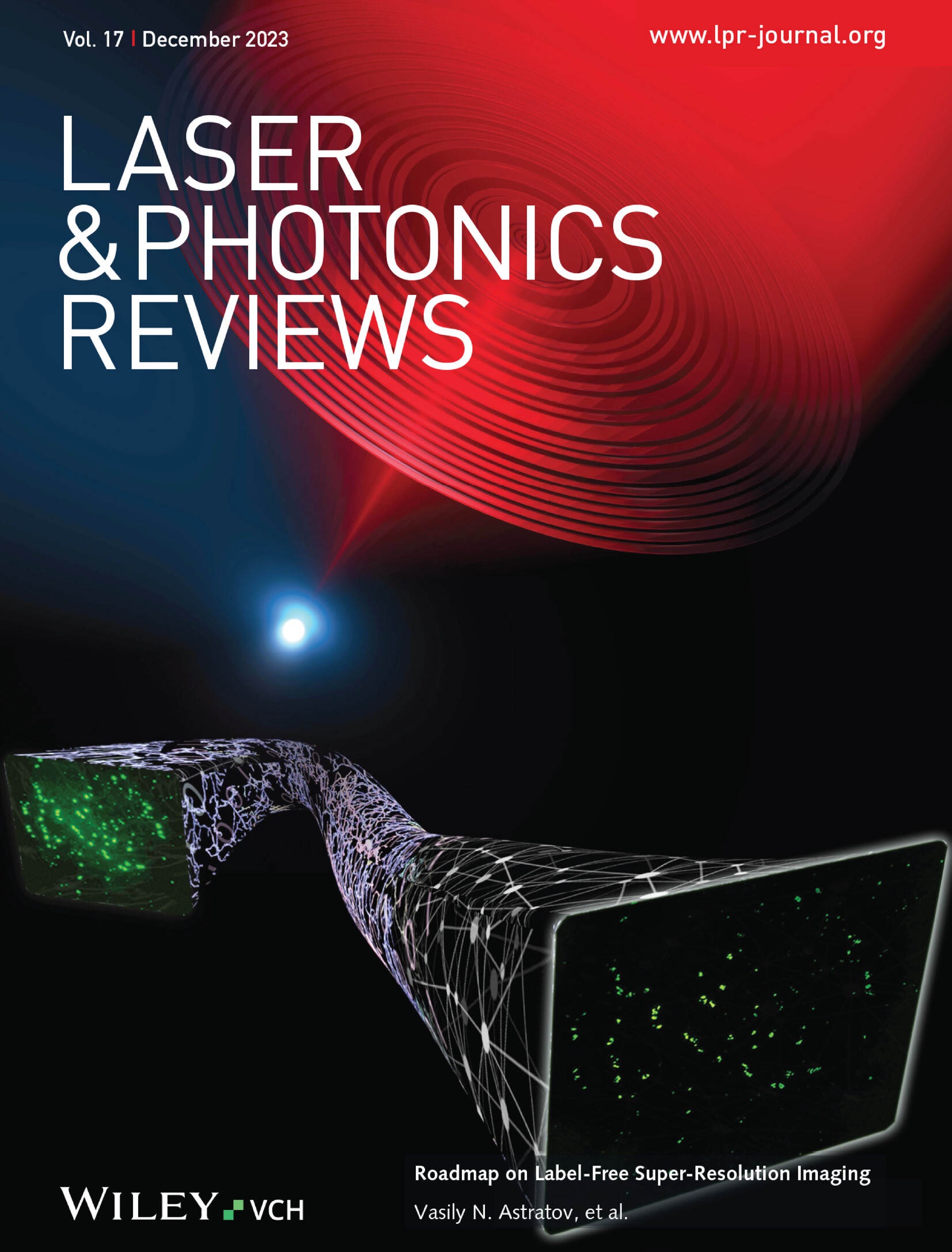从可见光-红外-激光雷达兼容伪装到光学限制器的持久调节激光自适应逆设计超材料
IF 9.8
1区 物理与天体物理
Q1 OPTICS
引用次数: 0
摘要
多波段兼容伪装(MCC)已经成为同步可见光(VIS, 400 - 760nm)、红外(IR)和光探测和测距(LiDAR)伪装的关键技术。然而,激光雷达伪装的高吸收率和由此产生的激光诱导热损伤之间的内在权衡严重限制了实际部署。激光自适应超材料(lam)是开创性的,它将相变材料与逆设计光子协同作用,以实现宽带VIS - IR伪装一致性(低VIS反射率:0.29;低红外发射率:在3-5µm处0.29,在8-14µm处0.24),在没有外部控制的情况下,在LiDAR伪装(吸收:在1.06/1.55/10.6µm处0.81/0.93/0.78)和光学限制器(调制对比度>;2.5倍)之间进行自适应切换,以及在非大气窗口通过可调谐波长选择性发射进行按需热管理。基于VO2的LAM表现出秒响应(≈1 s)和长寿命耐久性(>; 30000循环),而基于In3SbTe2的LAM表现出创纪录的性能:颜色模拟、4.5倍光谱调制、16 ns超快开关和超过50 kW cm - 2的激光损伤阈值。这项工作为自适应窄带-宽带混合光子系统建立了一个通用范例,对下一代伪装技术、辐射冷却和多波段光电集成具有变革性意义。本文章由计算机程序翻译,如有差异,请以英文原文为准。
Laser‐Adaptive Inverse‐Design Metamaterials for Durable Regulation from Visible‐Infrared‐LiDAR Compatible Camouflage to Optical Limiter
Multiband compatible camouflage (MCC) has emerged as a critical technology for synchronizing visible (VIS, 400–760 nm), infrared (IR), and light detection and ranging (LiDAR) camouflage. However, the inherent trade‐off between LiDAR camouflage's high absorptivity and its resultant laser‐induced thermal damage severely limits practical deployment. Laser‐adaptive metamaterials (LAMs) are pioneered, synergizing phase‐change materials with inverse‐design photonics to achieve broadband VIS‐IR camouflage consistency (low VIS reflectance: 0.29; low IR emissivity: 0.29 at 3–5 µm, 0.24 at 8–14 µm), adaptive switching between LiDAR camouflage (absorption: 0.81/0.93/0.78 at 1.06/1.55/10.6 µm) and optical limiter (modulation contrast >2.5×) without external controls, and on‐demand thermal management via tunable wavelength‐selective emission in the non‐atmospheric windows. The VO2 ‐based LAM exhibits second response (≈1 s) and long‐life durability (>30 000 cycles), while the In3 SbTe2 ‐based counterpart demonstrates record performance: color mimicry, 4.5× spectral modulation, 16 ns ultrafast switching, and laser damage thresholds exceeding 50 kW cm−2 . This work establishes a universal paradigm for adaptive narrowband‐broadband hybrid photonic systems, with transformative implications for next‐generation camouflage technologies, radiative cooling, and multiband optoelectronic integration.
求助全文
通过发布文献求助,成功后即可免费获取论文全文。
去求助
来源期刊
CiteScore
14.20
自引率
5.50%
发文量
314
审稿时长
2 months
期刊介绍:
Laser & Photonics Reviews is a reputable journal that publishes high-quality Reviews, original Research Articles, and Perspectives in the field of photonics and optics. It covers both theoretical and experimental aspects, including recent groundbreaking research, specific advancements, and innovative applications.
As evidence of its impact and recognition, Laser & Photonics Reviews boasts a remarkable 2022 Impact Factor of 11.0, according to the Journal Citation Reports from Clarivate Analytics (2023). Moreover, it holds impressive rankings in the InCites Journal Citation Reports: in 2021, it was ranked 6th out of 101 in the field of Optics, 15th out of 161 in Applied Physics, and 12th out of 69 in Condensed Matter Physics.
The journal uses the ISSN numbers 1863-8880 for print and 1863-8899 for online publications.

 求助内容:
求助内容: 应助结果提醒方式:
应助结果提醒方式:


